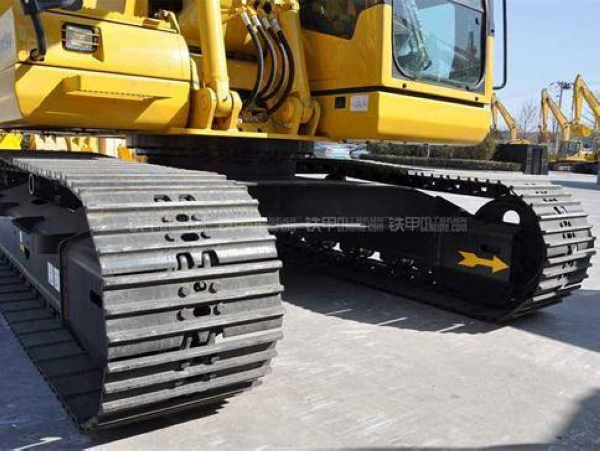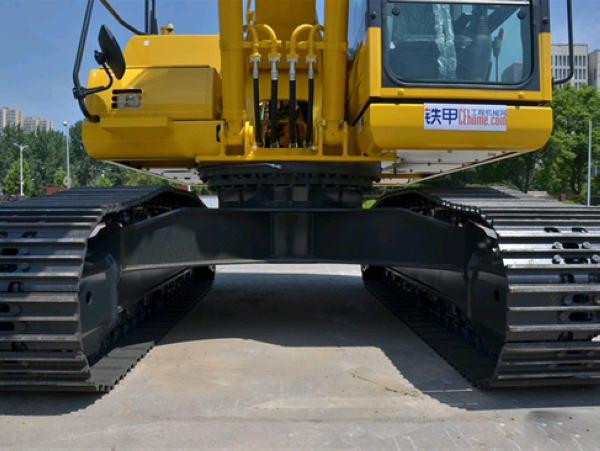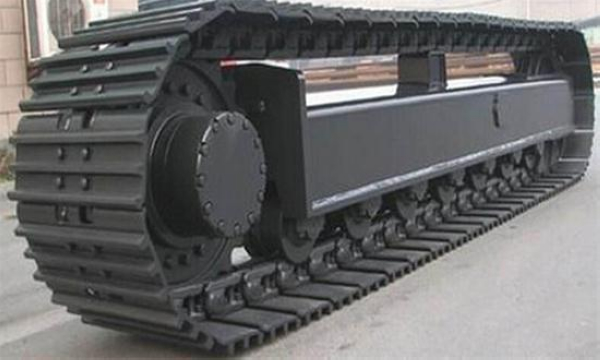Excavator track deviation refers to the uneven walking speed of the left and right tracks during excavator operation, which is a common fault encountered during excavator use. Track deviation significantly impacts operational efficiency and must be addressed promptly. Let’s explore the causes of track deviation.

- Uneven tension between the left and right tracks. This is one of the few causes of track deviation that can be visually identified. In such cases, the track tension should be adjusted promptly, and grease should be applied for lubrication.
- Aging or damage to the seal ring of the central rotating joint. Due to contaminants mixed into the hydraulic oil, these contaminants enter the sliding surfaces of the central rotating joint, causing excessive wear on the seal ring, reducing its sealing effectiveness, leading to hydraulic oil leakage, and resulting in reduced pressure on one side of the travel hydraulic motor, causing travel deviation.
- The parking brake oil circuit on one side of the track cannot be relieved. Due to foreign objects blocking the balance valve in the brake oil circuit, the valve core cannot move, obstructing hydraulic oil flow, causing the travel hydraulic motor to remain in a braking state and unable to rotate, resulting in travel deviation. In this case, the balance valve should be thoroughly cleaned, and foreign objects should be prevented from entering to ensure normal valve switching.
- Oil leakage from the safety valve of the travel motor on one side of the track. Oil leakage from the safety valve causes low pressure in the travel circuit, resulting in insufficient rotational driving force for the hydraulic motor, leading to travel deviation.
- The pressure generated by the hydraulic pump is too low. Due to excessive wear of the hydraulic pump or a stuck piston, hydraulic oil leakage or reduced pumping capacity occurs, causing low pressure throughout the hydraulic circuit, slowed hydraulic motor speed, and travel deviation.
- The travel proportional valve on one side of the track is damaged. The proportional valve adjusts the control oil pressure based on the size of the control stroke, causing the main valve to move differently and ultimately controlling the speed of the working device. If the proportional valve is internally damaged, the valve core's movement is obstructed, directly affecting the valve body's control function and ultimately affecting the travel motor's speed.
- The overflow valve on one side of the track's travel motor is damaged. The relief valve serves as a protective device that can promptly relieve high pressure within the hydraulic motor when subjected to external impacts, thereby protecting related components from damage. Due to the damage to the relief valve in the travel motor, the pressure in the oil circuit decreases, causing the travel motor to lose power.
- The main valve on one side of the track is damaged, and the valve spool movement is obstructed, causing the pump body to output reduced oil pressure, which is insufficient to normally drive the travel motor to rotate.

There are numerous causes of travel deviation, and most are due to damage to internal hydraulic system components, which are not visible to the naked eye. Therefore, when investigating the cause of travel deviation in an excavator, it is necessary to inspect each component individually based on the working principle of the hydraulic system, starting with the easier components first. Once the damaged area is identified, the relevant components should be repaired or replaced promptly. Additionally, most component damage is related to contaminants in the hydraulic oil. Since the hydraulic system consists of a series of precision components that are highly sensitive to contaminants, special care must be taken during regular use and maintenance to prevent hydraulic oil contamination.















